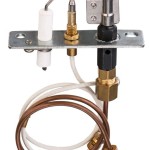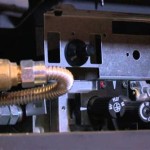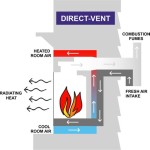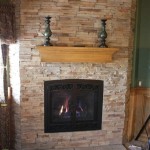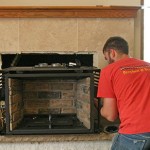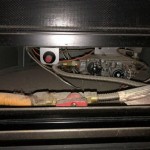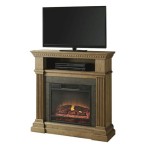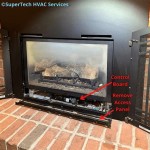Can You Reface A Brick Fireplace With Stone? Exploring the Possibilities
The decision to update a fireplace often involves considering various factors, including aesthetics, cost, and structural integrity. Many homeowners find themselves contemplating whether a brick fireplace can be successfully refaced with stone. The answer is generally yes, but careful planning and execution are crucial for a successful and visually appealing outcome. Refacing a brick fireplace with stone can dramatically alter the character of a room, adding a touch of rustic elegance, modern sophistication, or any desired style. However, the viability and process depend on several key elements.
Before embarking on this project, a thorough assessment of the existing brick fireplace is paramount. Any structural issues, such as crumbling mortar, loose bricks, or cracks, must be addressed before the stone veneer is applied. Ignoring these problems can lead to instability and compromise the integrity of the entire fireplace structure. In some cases, a professional inspection might be necessary to determine the extent of the damage and recommend appropriate repairs. Addressing structural concerns beforehand is essential to creating a stable base for the new stone facing.
The chosen stone veneer plays a significant role in the success of the refacing project. There are numerous options available, ranging from natural stone to manufactured stone veneers. Natural stone offers a unique, timeless appeal, but it can be heavier and more expensive. Manufactured stone veneers, on the other hand, are lighter, more cost-effective, and available in a wider variety of colors and textures. The selection should consider the overall design aesthetic of the room, the budget, and the ease of installation. Careful consideration of the stone's weight is crucial, as the brick fireplace must be able to support the added load.
Assessing the Existing Brick Fireplace
A successful refacing project begins with a comprehensive assessment of the existing brick fireplace. This assessment involves a detailed examination of the brickwork, mortar joints, and overall structural integrity. Look for signs of cracking, crumbling, or water damage. Pay particular attention to the areas around the firebox and the chimney connection, as these are often subject to the highest levels of heat and stress. Any existing issues should be addressed before proceeding with the stone veneer installation. If the brick is painted, it will need to be prepared accordingly to promote proper adhesion for the mortar. This may involve sandblasting, chemical stripping, or applying a bonding agent.
The size and shape of the fireplace also influence the choice of stone veneer. A large, imposing fireplace might benefit from larger stones, while a smaller fireplace might look better with smaller, more delicate stones. The existing hearth should also be considered. It might need to be enlarged or modified to accommodate the new stone facing and maintain proper clearances from combustible materials. Furthermore, the overall design of the room should be taken into account to ensure that the refaced fireplace complements the existing decor.
Another critical step in the assessment phase is determining the weight-bearing capacity of the existing fireplace. Brick fireplaces are typically built to support a certain amount of weight, but adding a thick layer of stone veneer can significantly increase the load. If there are any concerns about the fireplace's ability to support the added weight, a structural engineer should be consulted. They can assess the foundation, the brickwork, and the chimney to determine if any reinforcement is necessary.
Selecting the Right Stone Veneer
The selection of stone veneer is a critical decision that impacts both the aesthetic appeal and the long-term durability of the refaced fireplace. Natural stone offers a unique, rustic look, with variations in color and texture that add character. However, natural stone can be heavy and challenging to work with, requiring specialized tools and techniques. Manufactured stone veneer, also known as cultured stone, provides a lighter and more cost-effective alternative. It is made from a concrete mix that is molded and colored to resemble natural stone. It is available in a wide range of styles, colors, and textures, making it easy to find a product that matches the desired aesthetic.
When choosing stone veneer, consider the overall design of the room and the desired style of the fireplace. A modern room might benefit from a sleek, linear stone veneer, while a more traditional room might call for a rustic, stacked stone veneer. The color of the stone should also complement the existing decor. Consider the color of the walls, the flooring, and the furniture when making your selection. It is recommended to obtain samples of the stone veneer and view them in the room to get a better sense of how they will look in the actual space.
The installation requirements of different types of stone veneer also vary. Natural stone typically requires specialized tools and expertise, while manufactured stone veneer is often easier to install. Be sure to read the manufacturer's instructions carefully and consider whether you have the necessary skills and tools to complete the project yourself. If not, it is best to hire a qualified contractor who has experience installing stone veneer.
The Installation Process
The installation process for refacing a brick fireplace with stone involves several key steps. First, the brick surface needs to be properly prepared. This usually involves cleaning the brick to remove any dirt, dust, or debris. If the brick is painted, it may need to be sandblasted or treated with a chemical stripping agent to remove the paint. A bonding agent may also be applied to improve the adhesion of the mortar.
Next, a scratch coat of mortar is applied to the brick surface. This provides a rough surface for the stone veneer to adhere to. The scratch coat should be allowed to dry for at least 24 hours before the stone veneer is installed. The stone veneer is then applied to the scratch coat using a thin-set mortar. The stones should be carefully positioned and pressed firmly into the mortar to ensure a strong bond. Spacers may be used to maintain consistent joint widths between the stones. As the stones are set, ensure that the stone finish is clean and free of mortar.
Once the stone veneer is installed, the mortar joints need to be pointed. This involves filling the joints with mortar using a grout bag or a pointing trowel. The mortar should be packed tightly into the joints and then smoothed out with a damp sponge or brush. The joints can be finished in a variety of ways, depending on the desired look. Some common joint finishes include flush joints, recessed joints, and raked joints. After the mortar has cured, the stone veneer should be sealed with a stone sealant to protect it from moisture and staining.

Reface A Fireplace With The Look Of Stone Or Brick Barron Designs

Reface A Fireplace With The Look Of Stone Or Brick Barron Designs

Pin By Tarra Wills Efkarpidis On For The Home Brick Fireplace Remodel Stone

Stone Veneer Over A Brick Fireplace Updates The Look

Stone Veneer Over A Brick Fireplace Updates The Look

Brick Fireplace Makeover Pine And Prospect Home

Reface Fireplace Brick Makeover Home Stone Designs

How To Cover A Brick Fireplace With Wood Stone Nina Hendrick Home

10 Fireplace Makeover Ideas Before And After Regency

How To Cover A Brick Fireplace With Stone
Related Posts

